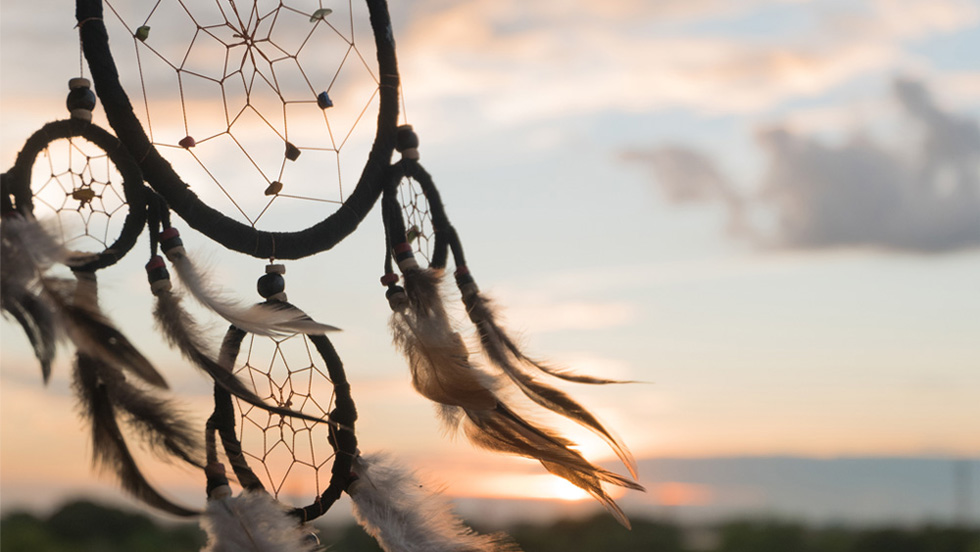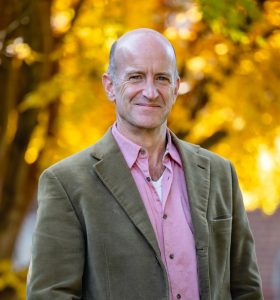
A history major looks at how the Adelphi community—and everyone—can all honor Native American heritage, culture and history this month and year-round.
National Native American Heritage Month is a time for us to remember the importance of acknowledging the civilizations that populated the Americas before the Europeans arrived, their histories, cultures and how the past has impacted the present.
As I wrote in my review of Martin Scorsese’s newest release, Killers of the Flower Moon, in The Delphian, we can’t give Native Americans back what they lost, but we can give them back their voice. History can’t be changed but we can at least look at the situation in the most human way possible, on both sides.
As a history major focusing on U.S. history, I know the value and importance of giving all individuals and groups a voice and learning about the experiences and contributions of Native Americans. Without hearing from all perspectives, we can never gain a complete understanding of why people have thought and behaved in certain ways throughout history.
University Libraries Holds “Indigenous Lands of Long Island” Event
That’s why I attended the Adelphi University Libraries “Indigenous Lands of Long Island” event on October 10 in the Swirbul Library. James Cho, associate professor, and Sheila Sincinito, administrative assistant, who both work in the University Libraries Cataloging and Metadata Strategies unit, as well as Dana Sinclair ’08, assistant professor, a collections and open strategies librarian, discussed precolonial Long Island history and geography, giving attendees insights into the indigenous ancestral homelands that became the present-day towns and villages of Long Island.
For example, for Adelphi:
- The Garden City campus is on the ancestral lands of the original homelands of the Merrick and Munsee tribal nations.
- The Hauppauge Center is on Secatogue land.
- The New York City–Brooklyn Center was originally Munsee Lenape land.
- The Hudson Valley Center Poughkeepsie location was the home of the Schaghticoke, Munsee Lenape and Mohicans.
- The Hudson Valley Center Middletown location is on Munsee Lenape and Mohican land.
Including Native Americans in the Curriculum

Michael Lacombe, PhD, associate professor of history
Michael Lacombe, PhD, is an associate professor of history at Adelphi and the author of Political Gastronomy: Food and Authority in the English Atlantic World (2012). He specializes in early American history, both the native and colonial populations. As a student in his Early America: 1492-1680 course, I am gaining a better understanding of what it meant to be a Native American during the tumultuous time when Europeans arrived in North America. Dr. Lacombe encourages taking a look at history through the words of those with firsthand experience. The use of primary sources provides an even more impactful and comprehensive look at other communities and cultures.
“You can’t really understand early American history without putting native people in the center of the story,” Dr. Lacombe said. “I hope students come away from my classes in early America [understanding] that Native Americans played a major role and were involved in all of the subjects that we learn about—and not as passive victims who were acted on by Europeans but as actors in the story as well.”
He said that teaching early American history has changed over the years, from being “very much a European history of North America” to a more decolonizing approach. “I would say that this ‘decolonize the curriculum’ statement is trying to say: Let’s not make the mistake of saying that English Puritans brought to the New World their love of liberty and their desire for freedom and everything else, as if somehow we can tell that story in a way where the only people that matter are the New England Puritans.”
Dr. Lacombe suggests that all Americans can celebrate National Native American Heritage Month by learning some aspect of Native American history or culture. “Read one book, look at the work of one artist … study some aspects of Native American history and culture and then try to think about what light that sheds on the big story and how it changes the picture.”
Native Americans in the Adelphi Community
Our past stories about Native American students and alumni include:
- Shinnecok Tribal Leader Lance Gumbs ’93: “Adelphi University Made Me the Tribal Leader I am Today”—An alum revived his family business and became the tribal ambassador/representative of the Shinnecock Indian Nation, co-chair of the annual Shinnecock Indian Powwow and vice president of the National Congress of American Indians for the Northeast region.
- Students Create Adelphi’s First-Ever Event Series in Honor of Native American Heritage Month—In 2021, then-students Powless and Maybee formed the Indigenous Peoples Awareness Coalition (IPAC) and organized the first events honoring National Native American Heritage Month at Adelphi.
- A Force of Nature—Powless came to Adelphi to major in environmental studies and play volleyball.
Books and Films by and About Native Americans
- An American Sunrise: Poems (2019), by Joy Harj
- Atanarjuat: The Fast Runner (2001), Apple TV or ask a local library
- Ceremony (1977), by Leslie Marmon Silko
- Gather (2020), Netflix and Kanopy
- Killers of the Flower Moon (2023), currently in theaters
- The Last of the Line (1914), Internet Archive and YouTube
- Reservation Dogs, Hulu
- Smoke Signals (1998), Showtime
- Songs My Brothers Taught Me (2015), Kanopy
- There There (2018), by Tommy Orange
- Where the Spirit Lives (1989), Internet Archive
Resources in Swirbul Library
- American Indian History Day by Day: A Reference Guide to Events, Roger M. Carpenter
- American Indian History, Vol. 1 and 2, Carole A. Barrett
- Distinguished Native American Spiritual Practitioners and Healers, Troy R. Johnson
- Encyclopedia of American Indian History, Bruce E. Johansen and Barry Pritzker, editors
- Encyclopedia Britannica
- The First Americans: Race, Evolution and the Origin of Native Americans, Joseph F. Powell
- The Gale Encyclopedia of Native American Tribes, Sharon Malinowski
- Historical Dictionary of Native American Movements (e-book), Todd Leahy and Nathan Wilson
- Native American Arts & Cultures, Anne D’Alleva
- NAIS (Journal of the Native American and Indigenous Studies Association), Jean M. O’Brien and Robert AllenWarrior, editors
- Native Studies Review (Journal)
- Speak Like Singing: Classics of Native American Literature, Kenneth Lincoln